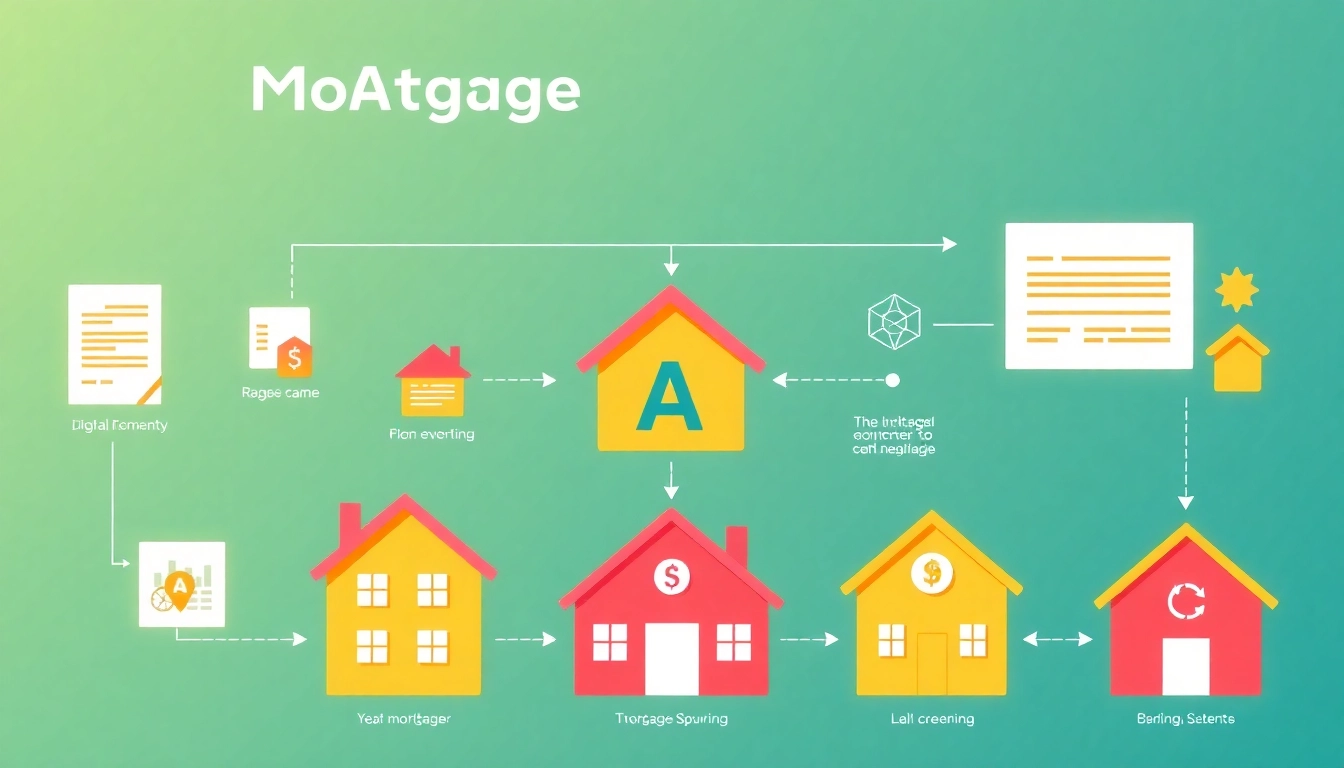Understanding the Mortgage Process with AI
As the mortgage industry continues to evolve with technological advancements, artificial intelligence (AI) has emerged as a transformative force, revolutionizing how lenders and borrowers engage throughout the mortgage process. By integrating mortgage process with AI, stakeholders can expect an unprecedented level of efficiency, accuracy, and customer satisfaction. This article delves deep into the intricacies of AI in mortgage lending, exploring its implications for both borrowers and lenders, and highlighting its advantages, challenges, and future potential.
What is AI in Mortgage Lending?
AI refers to the development of computer systems capable of performing tasks that typically require human intelligence. In the mortgage lending sphere, this can range from automating manual processes to analyzing data for better decision-making. With the advent of machine learning, natural language processing, and robotic process automation, AI has taken root in the mortgage process, enhancing nearly every stage from application to approval.
The Role of AI in Simplifying Processes
One of the most significant contributions of AI is its ability to simplify complex processes. Traditionally, the mortgage application process can be cumbersome, requiring extensive documentation and multiple interactions with mortgage professionals. AI streamlines this by enabling automated document verification, reducing the need for human oversight. For instance, Optical Character Recognition (OCR) technology allows AI systems to scan and interpret documents quickly, ensuring that lenders can verify applicants’ information without tedious manual reviews.
Impact on Borrowers and Lenders
The impact of AI in the mortgage process is profound for both borrowers and lenders. For borrowers, AI facilitates a smoother experience by minimizing delays associated with document processing and approval times. Lenders benefit from reduced operational costs, improved accuracy in risk assessments, and the ability to serve more customers efficiently. Moreover, AI can extend beyond processing applications to enhance customer interactions through chatbots and virtual assistants, providing instant responses to borrowers’ inquiries and improving overall service quality.
Key Advantages of AI in Mortgages
Streamlined Document Verification
Document verification is often cited as one of the most time-consuming aspects of the mortgage process. AI technologies, particularly those utilizing machine learning and OCR, allow lenders to verify borrowers’ documents in real-time. This capability significantly reduces loan processing times, allowing lenders to close deals faster. Furthermore, with the accuracy of AI, the risk of human error is markedly diminished, reducing the potential for compliance issues associated with incorrect documentation.
Improved Risk Assessment
AI enhances risk assessment mechanisms by analyzing vast datasets to identify potential red flags in loan applications. Traditional methods often rely on historical data and heuristic rules, which may overlook nuanced patterns indicating risk. In contrast, AI algorithms can adapt and learn from new data inputs, providing lenders with a dynamic risk assessment framework. This leads to better-informed lending decisions, ensuring that borrowers receive suitable loan products while minimizing default risks for lenders.
Faster Loan Approvals
One of the most tangible benefits of integrating AI in the mortgage process is the speed of loan approvals. AI can rapidly process loan applications—reducing approval times by as much as 20%, as suggested by industry reports. Through automation, lenders can readily access applicants’ credit scores, income statements, and other pertinent information, enabling real-time underwriting decisions. The faster the approval process, the more satisfied borrowers become, fostering long-term loyalty to lending institutions.
Challenges in Implementing AI Solutions
Regulatory and Compliance Issues
While the adoption of AI in the mortgage industry presents many advantages, it also raises regulatory compliance challenges. Lenders must navigate an evolving regulatory landscape that governs data privacy, consumer protection, and fair lending practices. There is a risk that automated systems may inadvertently perpetuate biases, thus necessitating robust oversight and auditing mechanisms to ensure compliance and fairness in AI decision-making processes.
Data Privacy Concerns
Data privacy remains a paramount concern when implementing AI in mortgage lending. Given the sensitive nature of the data involved—such as financial information, social security numbers, and personal identification—lenders must enforce stringent data protection policies to safeguard clients’ information from potential breaches. Implementing AI requires a careful balance between leveraging customer data to improve services and maintaining the highest level of security.
Integration with Existing Systems
Integrating AI into current mortgage systems can be challenging for lenders, particularly those relying on legacy technology. Transitioning to AI-driven platforms often requires significant investment in infrastructure, training, and change management. Furthermore, ensuring compatibility with existing systems is crucial for maintaining seamless operations. Lenders must develop a strategic roadmap that outlines the steps needed for smooth integration, ensuring minimal disruption during the transition period.
AI Technologies Shaping the Future of Mortgages
Machine Learning for Fraud Detection
Machine learning algorithms are instrumental in detecting fraud within the mortgage industry. By analyzing historical data and transaction patterns, AI can identify anomalies that may indicate fraudulent activities. For instance, if an applicant’s submitted income appears significantly higher than market averages for similar demographics, the AI system can flag this for further review. This proactive approach enhances the integrity of the mortgage process, protecting both lenders and consumers.
Natural Language Processing for Customer Interactions
Natural Language Processing (NLP) empowers AI systems to understand and respond to human language effectively. This capability is transforming customer service through chatbots and virtual assistants that can handle customer inquiries around the clock. By leveraging NLP, lenders can create personalized interactions with borrowers, responding to specific requests quickly and accurately. This not only improves customer satisfaction but also allows human representatives to focus on more complex inquiries that require personal touch and expertise.
Predictive Analytics for Market Trends
Predictive analytics is a powerful AI-driven tool that allows lenders to anticipate market trends and borrower behavior. By analyzing a wide range of variables—including economic indicators, interest rates, and consumer sentiment—AI can help lenders adjust their strategies accordingly. For example, if data suggests a dip in consumer confidence, lenders may prepare for a potential decrease in applications by adjusting their marketing efforts or scaling back on certain products.
Looking Ahead: The Future of the Mortgage Process with AI
Predictions for Industry Transformation
The future of the mortgage process is poised for dramatic transformation as AI technologies continue to advance. Experts predict a shift towards fully automated lending experiences, where major aspects of the application, underwriting, and approval processes are handled by AI without the need for human intervention. This shift not only streamlines operations but also allows for a personalized consumer experience based on data-driven insights.
Emerging Technologies to Watch
In addition to existing AI applications, emerging technologies such as blockchain could further reshape the mortgage landscape. Blockchain’s ability to create secure, transparent, and immutable records presents opportunities to simplify property transactions and enhance trust among buyers and lenders. Moreover, as quantum computing evolves, it could amplify AI’s processing capabilities, enabling more sophisticated risk analyses and predictive algorithms that drive better decision-making.
Building a Customer-Centric Approach
Ultimately, the advancements driven by AI in the mortgage process will hinge on the industry’s ability to maintain a customer-centric approach. While technology enhances efficiency and reduces costs, personal interaction remains vital to ensuring borrower satisfaction and trust. Lenders must find ways to leverage AI to create seamless and intuitive interactions without sacrificing the personal touch that consumers value. This balancing act will be critical for businesses looking to thrive in an increasingly automated future.



